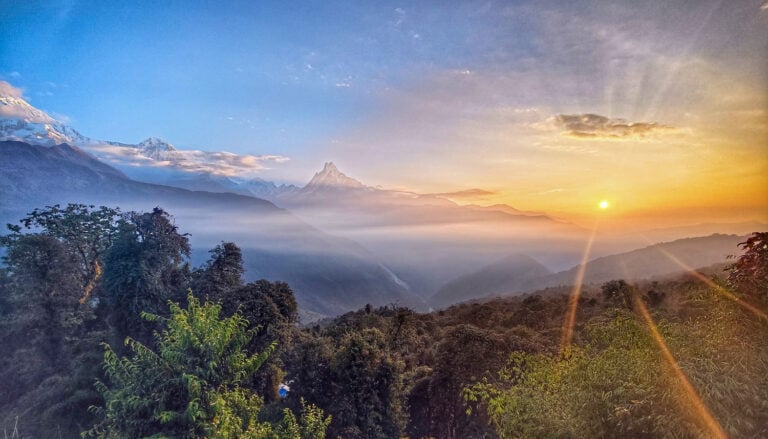Solo Travel in Nepal: Everything You Need to Know in 2025
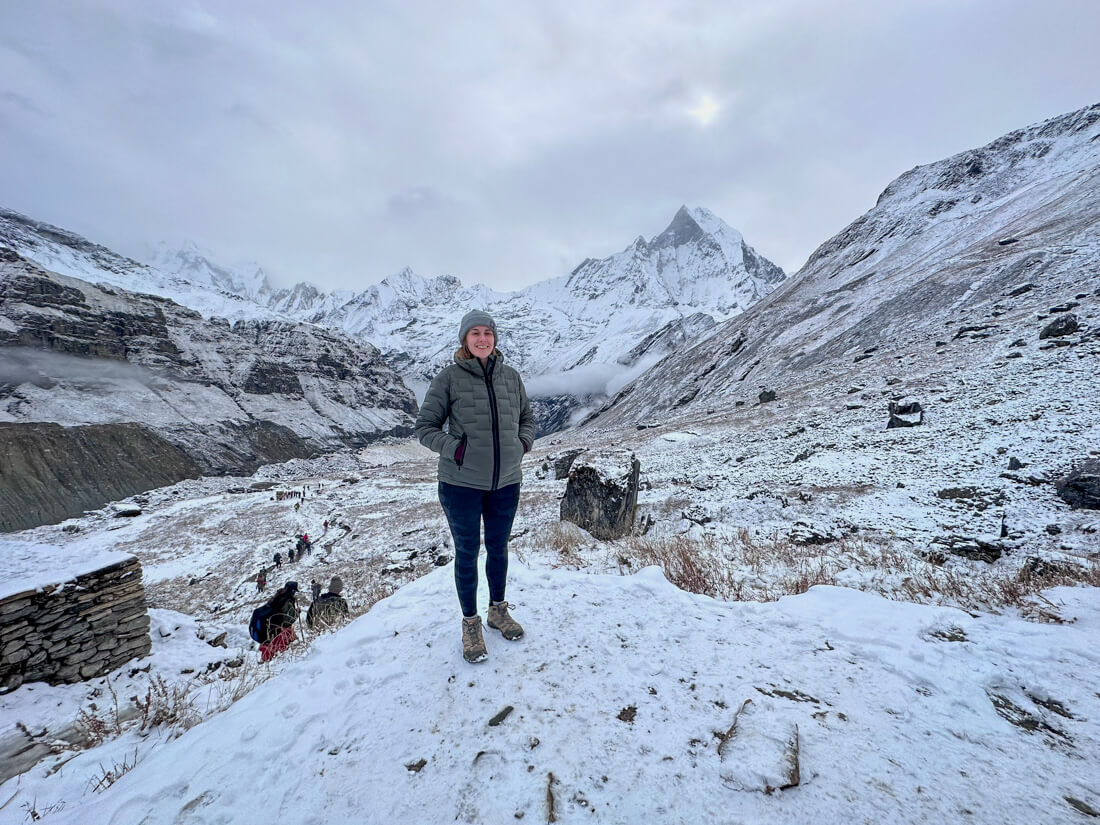
There is something so special and unique about Nepal. It’s a country steeped in history, rich in culture and is home to some of the most incredible scenery on the planet.
Despite being a popular tourist destination, solo travel in Nepal can be a bit of a scary prospect. I visited Nepal as a solo female traveller, and I’m not sure I’ve ever been so nervous about a trip before. Turned out I had nothing to worry about. Nepal is a fantastic destination for solo female travellers.
In this guide, I’ve shared everything you need to know about solo travel and solo female travel in Nepal. I’ve (hopefully) answered all your questions, including what to wear, where to visit, and how long to spend in Nepal. I’ve also attempted to answer the question, ‘Is Nepal safe for solo female travellers?’ (spoiler: yes, normally!)
While this guide is tailored towards solo travellers, it’s also a handy backpacking guide for anyone heading to Nepal with others.
Is Nepal safe for solo female travellers?
Nepal is generally a safe destination for backpackers and solo female travellers alike. As with any country, there are always risks, but serious crimes against tourists aren’t overly common in Nepal. In my experience, travelling solo in Nepal was perfectly okay. I received no unwanted attention for being by myself, even in Kathmandu.
Travelling alone can be a scary prospect, especially as a woman and going to a country with a very different culture. However, I have only positive things to say about my experience as a solo female traveller in Nepal. When I landed and was greeted by a friendly taxi driver, all my fears disappeared.
Having said that, I’m not sure Nepal would be a good destination for a first-time solo traveller (unless you’re very confident). That’s not so much to do with overall safety, but it’s not the easiest country to travel around. There is very little infrastructure, a lot of poverty, and some big cultural differences, and it’s generally a trickier country to navigate.

Safety in Nepal
While Nepal is generally a safe country for backpackers and solo travellers, there are still a few important safety points to be aware of.
General safety
Serious crimes against tourists in Nepal aren’t overly common, but you may encounter incidents of petty crime. This includes phone snatching, pick-pocketing, and scams. Although these aren’t as common in Nepal as in some other Asian countries, they’re still a possibility.
Here are a few general tips to follow as a solo female traveller in Nepal:
- Stick to the tourist areas
- Don’t walk alone at night
- Book taxis through your accommodation
- Keep your valuables somewhere safe
- Don’t flaunt your belongings or walk around with your phone out
- Be mindful of scams and don’t hand money over to anyone unless you’re sure it’s legit
I did encounter quite a few locals asking for money. While I never felt unsafe, this can feel a little intimidating. A local tour guide told me that walking away was the best thing to do.
Transport
The infrastructure in Nepal is very poor. This includes both road standards and airline safety standards.
Many of the main roads are unpaved and prone to landslips. Our journey of 125 miles (200km) from Kathmandu to Pokhara took almost 11 eleven hours. This was due to road works, slow-moving traffic, landslips, and a few other hold-ups, including a rock coming straight through the window.
Unless you’re staying in Kathmandu, you’ll more than likely need to venture on the roads at some point. The best thing to do is book a tourist shuttle through your accommodation. While these will feel more expensive, they are generally a little safer.
Unfortunately, Nepal’s airlines also have a poor safety record. If you’re heading to Everest Base Camp, you’ll need to fly to Lukla Airport, which is known to be the most dangerous airport in the world. There’s not much you can do about this and to be honest, I’m not convinced taking the bus would be any safer, but it’s still something to be aware of so you can make an informed decision.

Health and hygiene
Nepal’s low hygiene standards is something to be aware of. This isn’t a reason not to travel to Nepal, but it’s something to be mindful of so you can take precautionary measures to avoid becoming sick.
Tap water
Tap water in Nepal is not safe to drink anywhere in the country. Bottled and filtered water can also be very expensive, especially on hikes. I’d suggest purchasing a LifeStraw. This handy water bottle comes with a filter straw that claims to remove various bacteria and viruses.
I had always avoided buying a LifeStraw as I never saw the need, but it was useful in Nepal. I’d also suggest having some water purification tablets to hand. These can be used to make tap water drinkable. I did this for the water I needed to brush my teeth and wash my face.
Food
I didn’t get sick from any of the food in Nepal, but I heard stories of people who did. There’s no sure method to avoid this. (I once got food poisoning from a margarita pizza at a popular backpacking bar in the Philippines.)
However, try to avoid eating meat on the hiking trails and check reviews of local restaurants on Google before eating there. I avoided eating salads or any skinless fruit sold on the streets that may have been washed with tap water.
It’s a sensible idea to carry hand sanitiser in case you have no access to soap.
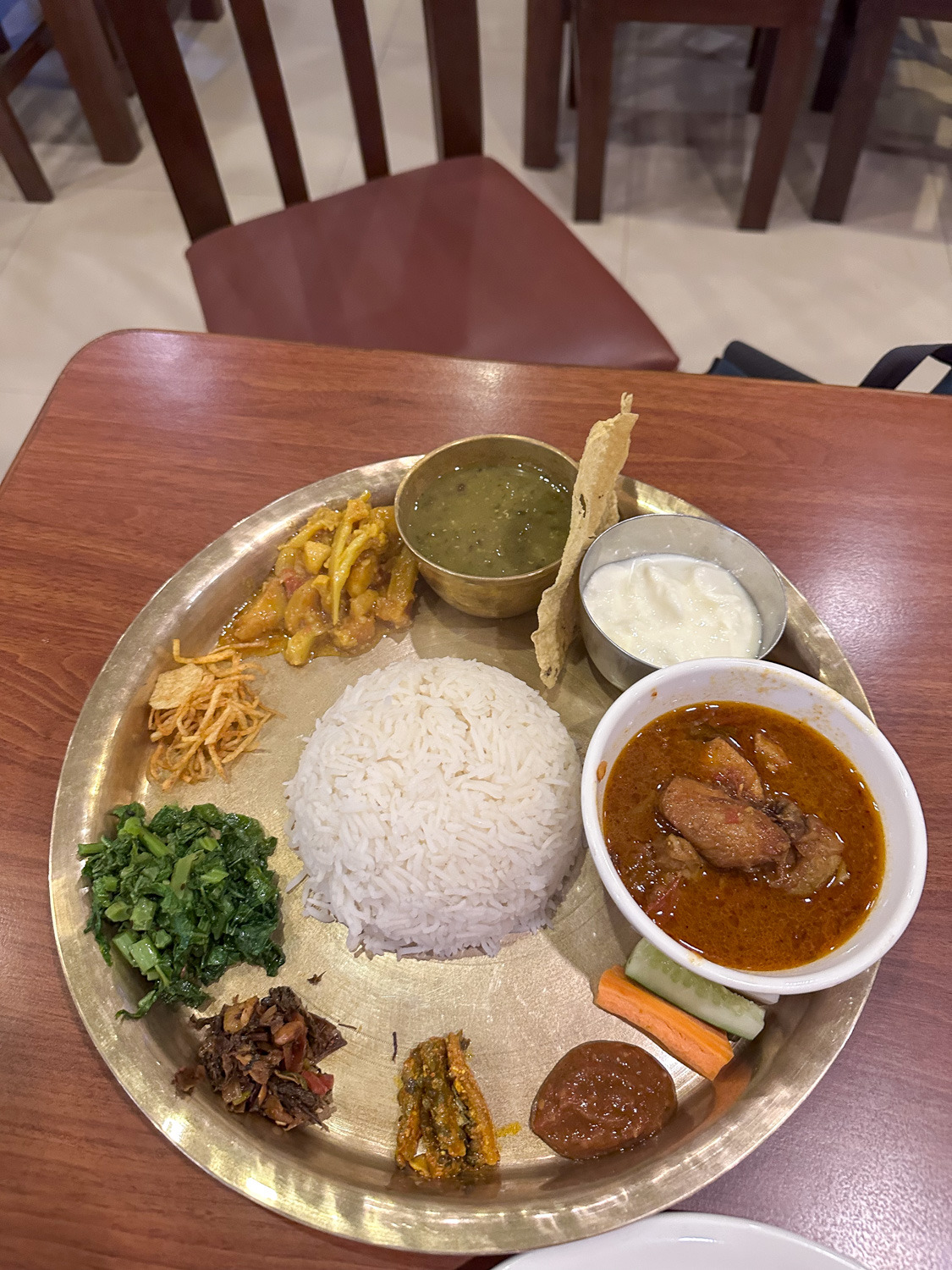
Natural disasters
Natural disasters, including earthquakes, are common in Nepal. A serious earthquake in 2015 killed around 9,000 people. Despite the risk of severe earthquakes to the country, many of the buildings and infrastructure are not built to withstand strong quakes.
Avalanches, landslides and flash flooding are also a possibility in Nepal, especially in the rainy season.
It’s a good idea to check your government’s website for the latest advice.
The pros and cons of solo travel in Nepal
As with many countries, there are pros and cons to travelling solo in Nepal.
I’m not sharing the cons to try and put you off, but I think it’s important to be honest on how I found solo travel in Nepal.
Pros of solo travel in Nepal
- Overall, it’s generally a safe country for solo travellers
- Minimal unwanted attention as a solo female traveller (based on my experience)
- An incredible country to explore
- Plenty of other backpackers
- Lots of hostels and friendly guest houses to choose from
- It’s on the cheaper side
Cons of solo travel in Nepal
- There can be a big culture shock
- It can be hard to navigate and get around
- It can feel overwhelming at times
- Lots to think about in terms of staying healthy (hygiene, food etc.)
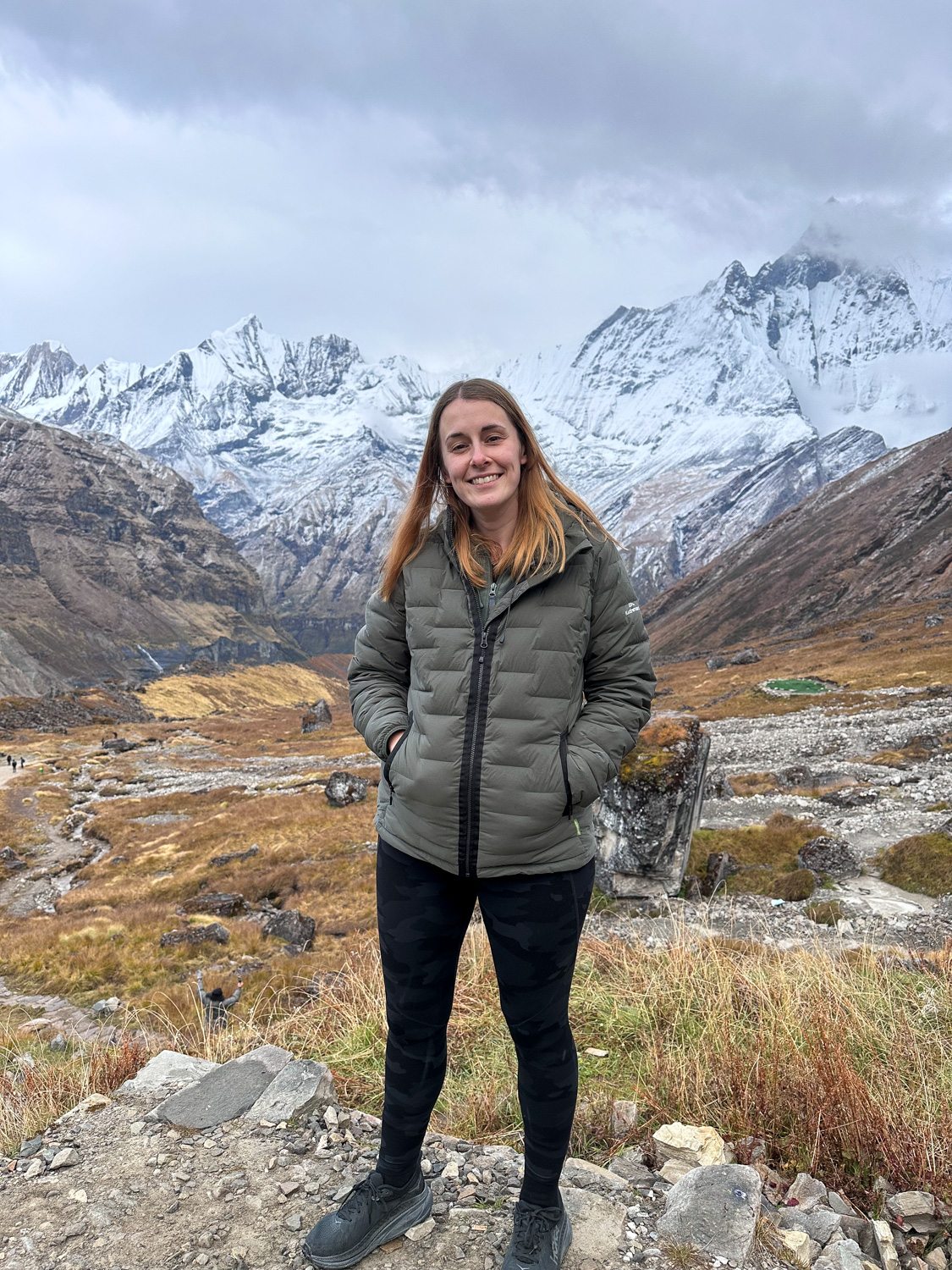
How long to spend in Nepal?
This is a tricky question to answer. The majority of visitors to Nepal are there to tackle one of the many world-class hikes in the country, such as the Annapurna Sanctuary or Everest Base Camp.
Any multi-day hikes aside, I would recommend spending at least 10 days to 2 weeks in Nepal. This will give you time to explore many highlights, including Pokahara, Kathmandu and Chitwan National Park. You could easily spend longer in Nepal, especially if you’re doing one of the big hikes.
If you have limited time around hiking, aim for at least 2 days in Kathmandu.
Best time of year to visit Nepal
The best time to visit Nepal is between October and December, especially if hiking is on your Nepal itinerary. This is the peak season in Nepal, so prices tend to be a bit higher, and the hiking trails are busier. However, this is the best time of year in terms of the weather and hiking.
October to February is also a great option if you’re not planning to hit the hiking trails. This is one of the best times to visit areas such as the Kathmandu Valley and Chitwan National Park.
October to February (peak tourist season)
October to February is the busiest time of year in Nepal. The monsoon rains have passed, the air is much cleaner in Kathmandu, and the temperatures are much cooler. October and November also tend to have the clearest skies, so they are popular for hiking.
Hiking is possible in January and February but be prepared for snow-covered trails and freezing cold temperatures.
March to May
The months of March, April and May are another great option for hiking and visiting Nepal. The main downside is the chances of rain increases.
April to September
This is Nepal’s rainy season, and visiting during these months isn’t recommended. The rains can be extremely heavy, and the risk of flash flooding and landslides increases.
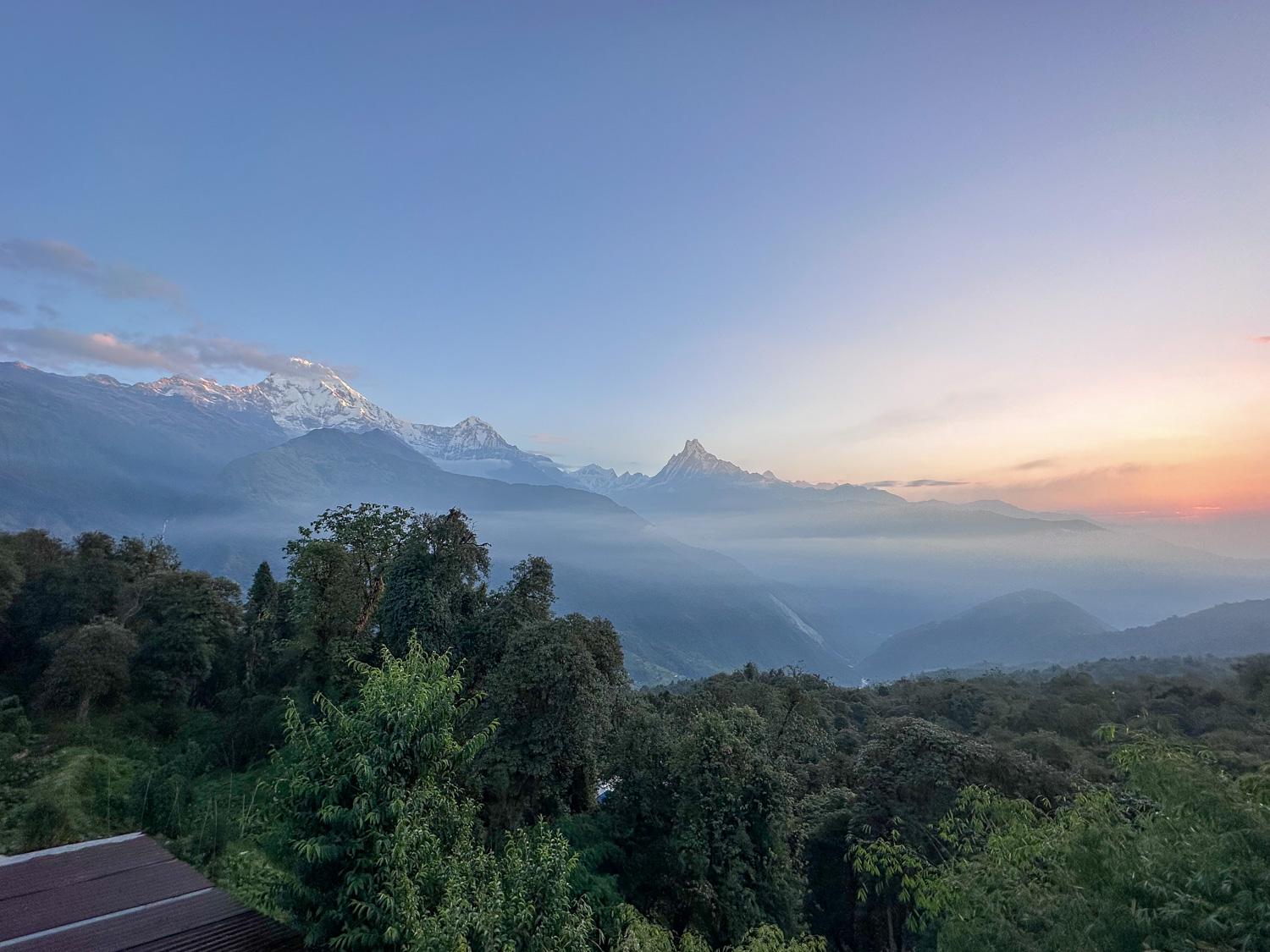
The best places to visit in Nepal as a solo traveller
There are several places worth visiting on your solo trip or backpacking trip to Nepal.
The capital city of Nepal – Kathmandu
Most trips to Nepal begin in the capital, Kathmandu. From the moment I arrived, I knew this city had something special.
I’ll be honest, crowded and polluted cities aren’t my favourite places to travel, but Kathmandu seems to be an exception to that rule. It has a charm to it which won me over within minutes of arriving. It has so much history, is rich in culture, and is home to some of the friendliest and most welcoming locals.
I don’t think Kathmandu will be for everyone and it’s certainly not somewhere to spend more than a few days, but it really is worth exploring.
Some of the best things to do in Kathmandu include joining a food tour, visiting Kathmandu Durbar Square, exploring the famous Monkey Temple, and visiting the Boudhanath Stupa.
I would personally spend at least three days exploring Kathmandu.
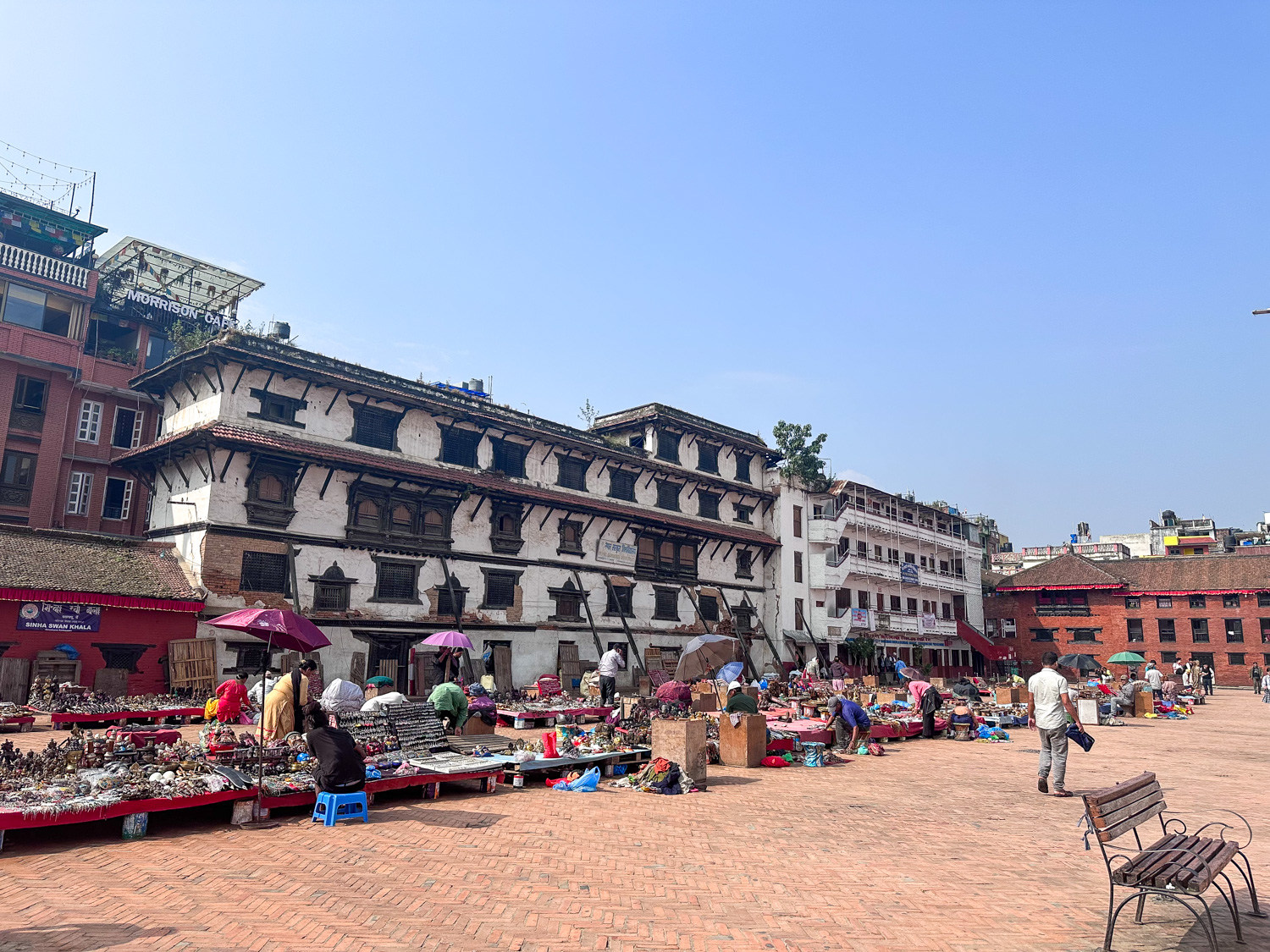
Mount Everest Region (Sagarmatha National Park)
Arguably the most famous region in Nepal, the Mount Everest area is known for its incredible snow-capped mountain peaks, endless beauty and being home to some of the most famous hikes on the planet.
If you’re planning to do the Everest Base Camp and/or Gokyo Lakes treks, this is where you’ll need to head. The easiest way to get to the region is to fly from Kathmandu to Lukla. You’ll then walk to Namche Bazaar, one of the largest settlements in the area, before continuing the hike.
If you’re not planning a hike in the area, I’m not sure flying to Lukla would be worth the journey.
Annapurna Region
The Annapurna region is one of Nepal’s most popular hiking destinations. This incredible area borders the stunning Himalayan Mountain Range and is home to several notable hikes including the Annapurna Sanctuary, Annapurna Circuit, Poon Hill and the Ghandruk Loop.
I loved hiking in this region of Nepal. The scenery is so diverse – from lush jungles to rugged mountains, the region is one epic hiking destination.
Most of these hikes will begin from Pokhara, which can be reached by bus or flight.
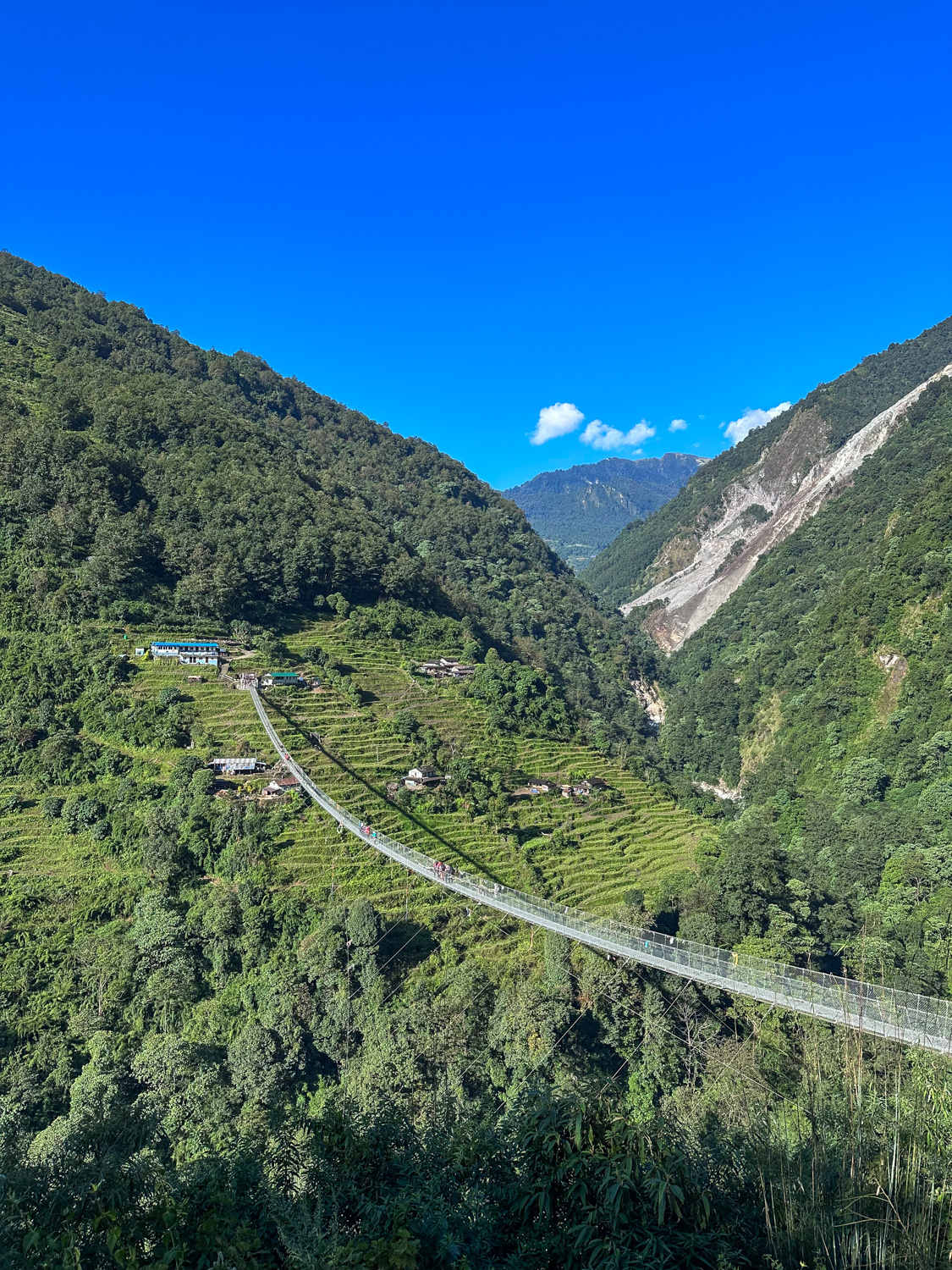
Pokhara
Pokhara is an absolute must-visit on any trip to Nepal, even if you don’t plan to do any hiking. This lakeside city has a completely different feel to it than Kathmandu. It’s much less chaotic and has some gorgeous scenery and exciting outdoor activities.
Pokhara is home to some shorter day hikes which take you through some traditional villages, allowing you to experience local life.
Reaching Pokhara is quite a journey, but it’s well worth it. I’d plan to spend three or four days here.
Lumbini
Lumbini is in Western Nepal. Home to the birthplace of Gautam Buddha, this area is one of the most significant Buddhist sites in the world.
Home to magnificent temples and monasteries, Lumbini is a must for anyone interested in the religious aspect of life in Nepal. It’s a little off the beaten path, but it can be reached by bus.
You can either fly into Bhairahawa airport, or take a bus from Chitwan or Pokhara. You can catch a bus from Kathmandu, but Chitwan and Pokhara are much easier options.
Chitwan National Park
Chitwan National Park is a famous UNESCO World Heritage Site in Nepal. This national park is home to several rare species of wildlife and a haven for animals such as rhinos and elephants.
You can book to go on safari through a tour agency in Kathmandu, or opt to get the bus there yourself and find a local guide once you’ve arrived.
Note: It’s important to know that there are animal welfare and over-tourism issues in Chitwan National Park. Always research your tour operator beforehand and ensure they operate sustainably.
Many safari tours to Chitwan are 3 days and 2 nights.
Kathmandu Valley
The area surrounding Kathmandu is home to some incredible scenery and towns well worth exploring.
Consider Bhaktapur, an ancient city and a must-visit for culture lovers. It can be done as a day trip from Kathmandu. Gorkha and Nagarkot are also well worth exploring.
You can base yourself in Kathmandu and do day trips, or consider staying in one of the towns.
Bandipur
Bandipur is one of the most beautiful towns in Nepal. This rural village is a little off the beaten path, but it’s filled with history and incredibly peaceful and serene.
You won’t need to spend more than a night or two here, but if you have the time, consider a stop here.
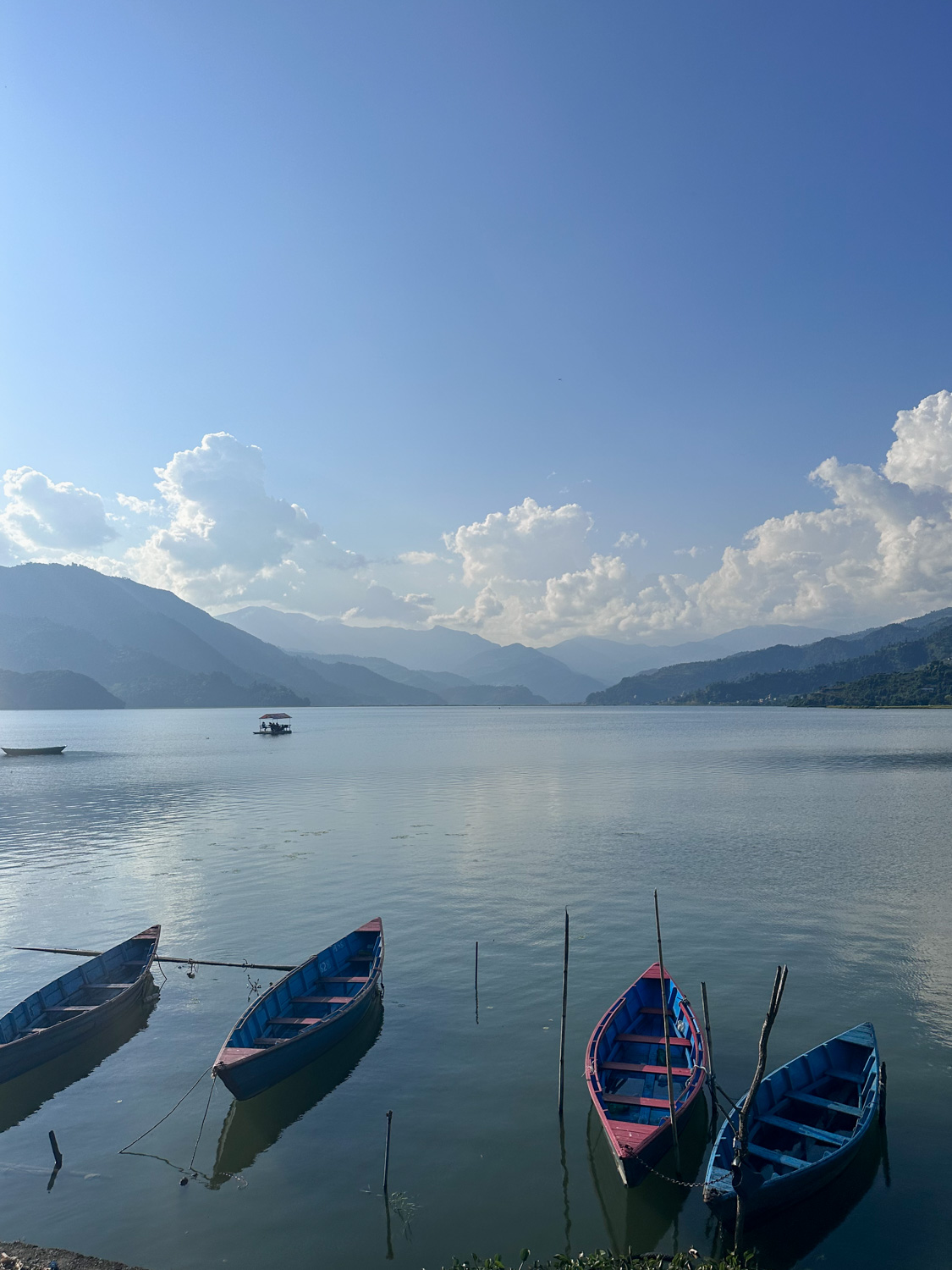
Suggested route
Here is a suggested backpacking itinerary for Nepal. Please note I have excluded any hikes from this list, but they can easily be added to your itinerary.
Stop one: Start in Kathmandu and spend 3 days here.
Stop two: Head to Chitwan National Park (either by bus or an arranged tour) and spend 3 or 4 days on safari.
Stop three: Take the bus to Lumbini and spend two days exploring the religious sites.
Stop four: Take the bus to Pokhara and explore the incredible city and nearby villages. Plan to spend at least three days here, depending on what you have planned.
Stop five: Start your journey back towards Kathmandu by taking a bus to Bandipur.
Stop six: Finish your time in Nepal by visiting some towns close to Kathmandu, such as Bhaktapur.
Solo Trekking in Nepal
Nestled on the edge of the Himalayas, Nepal is one of the best hiking destinations in the world. While many associate Nepal with climbing Mount Everest, the world’s tallest mountain, many hikes are much more accessible and achievable.
Some of the best hikes in Nepal include Everest Base Camp, the Annapurna Circuit Trek, the Annapurna Sanctuary Trek (to Annapurna Base Camp), the Manaslu Circuit (next on my list), and the Langtang Valley Trek. Shorter hikes include the Ghorepani Poon Hill Trek and the Ghandruk Loop.
You can book your tours in advance with providers such as G Adventures or Much Better Adventures, or you can book last-minute tours in Kathmandu.
How to trek as a solo traveller
In March 2023, the Nepali government imposed a new law requiring any foreigner trekking in the mountains to have a local guide.
During my time in Nepal, it was obvious that many tourists, including solo hikers, were ignoring this rule and still hiking without a guide. If you’re on one of the popular trails, they’re well-marked enough that it would be difficult to get lost. However, the law has been brought in to ensure the safety of tourists. In addition, hiring a local guide is putting valuable money back into the economy.
So, even if you travel to Nepal alone, you won’t likely be hiking alone. Most visitors either pre-book their hiking tours or find last-minute deals in cities such as Kathmandu or Pokhara. There are endless trekking agencies around Thamel in Kathmandu and all along the main street in Pokhara.
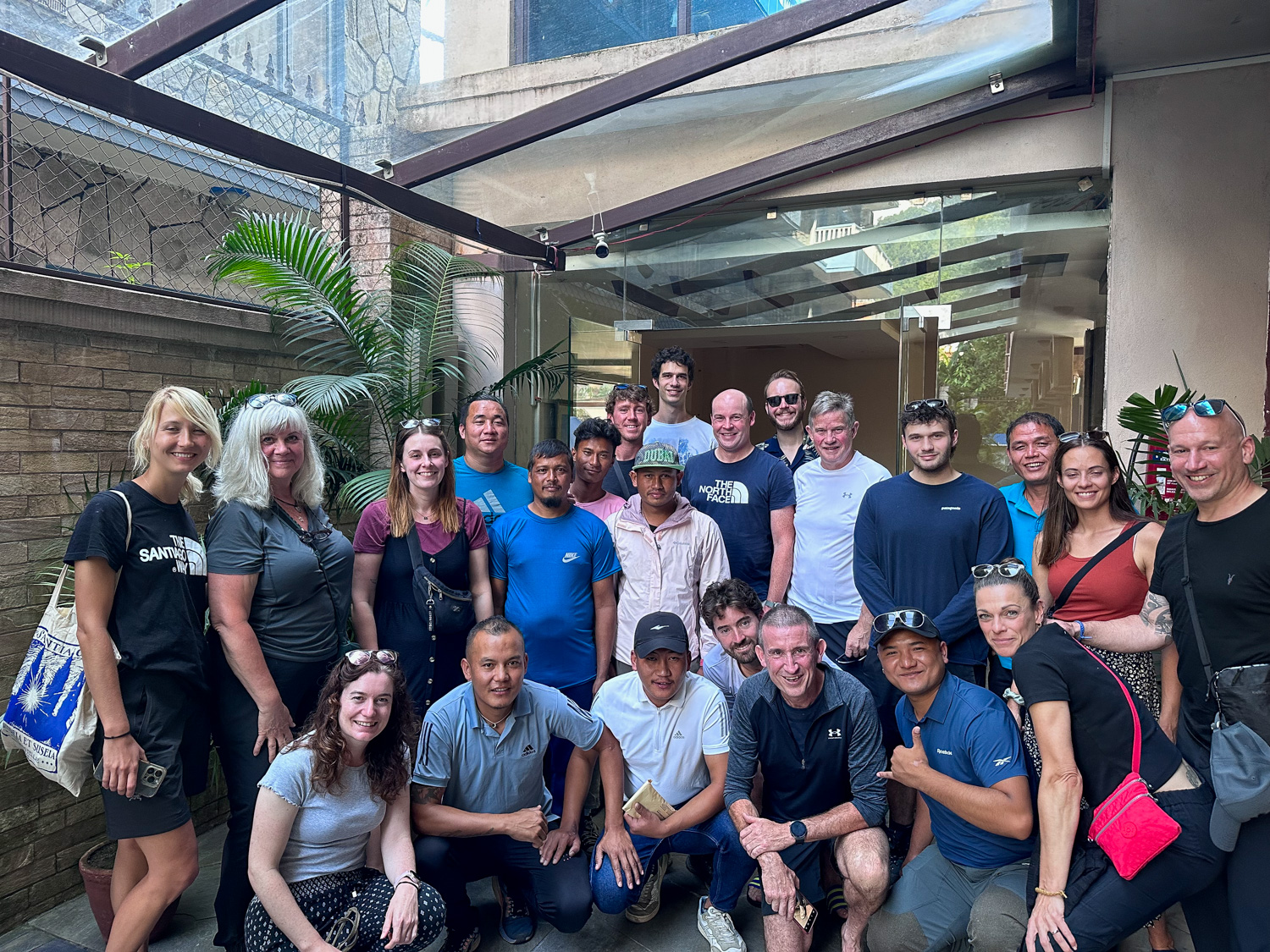
While in Kathmandu, a group of people in my hostel were arranging a hike to Annapurna Base Camp. However, for solo trekkers or first-time trekkers, I think it’s a good idea to arrange your tour before arriving in Nepal. This ensures you’ll be able to find a trek you want to do with a reputable company. I hiked the Annapurna Sanctuary with G Adventures and can’t speak highly enough of my great experience. The majority of those in my hiking group were solo travellers.
If this is your first trek in Nepal, it’s important to be aware of altitude sickness. Many of the hikes in Nepal reach high elevations which can induce altitude sickness.
It’s sensible to read up on how to prevent altitude sickness and speak to a doctor if you have any specific concerns.
Is Nepal worth visiting without trekking?
Yes! Nepal is absolutely worth visiting even if you don’t want to hike. In fact, many of the travellers I met in my hostel weren’t planning any hikes. Nepal is full of culture and history, and there is so much to discover about this country.
My suggested itinerary above outlines a good route for those not planning to go hiking.
How to get around Nepal
Getting around Nepal isn’t always easy. The country lacks a solid infrastructure, and many of the roads are unpaved and cross high mountain passes.
Local buses can take you around, but this isn’t always recommended. They can be dangerous and very unreliable. However, most of the popular attractions in Nepal are connected to Kathmandu by a tourist bus. You can normally book these through your accommodation or local tour agencies.
The other option is to fly around Nepal. However, Nepal’s airlines don’t have the best safety record. In fact, flying into Lukla is considered to be one of the most dangerous landings in the world. Weather can also have a huge impact on flying in Nepal. Extreme mountain weather often cancels or delays flights.
That said, thousands of tourists fly around Nepal every year with no problems. I’m not personally convinced that taking a bus is much safer, so do what is best for your budget and Nepal itinerary.
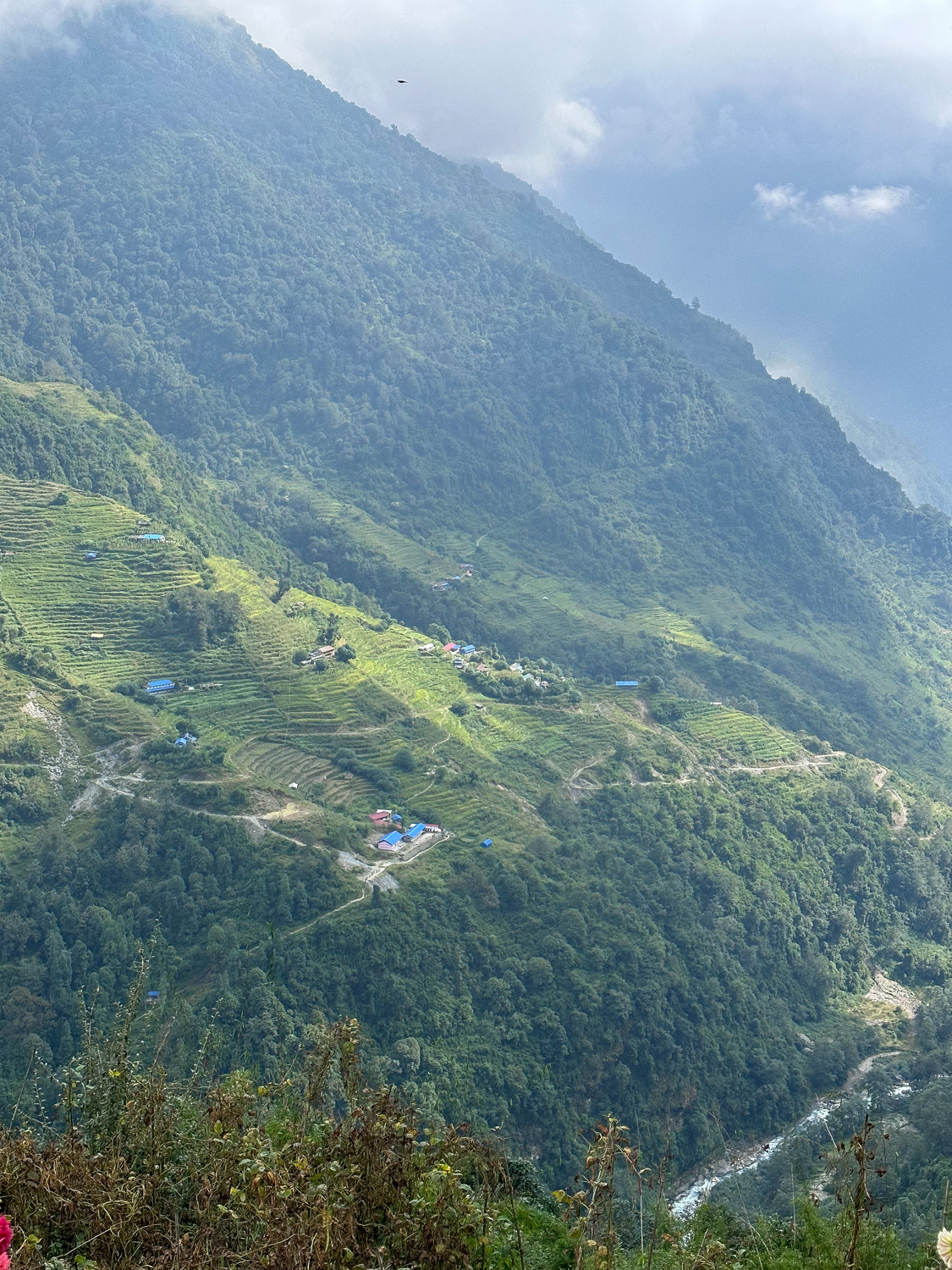
Nepal backpacking budget for solo travellers (2024)
If you’re on a budget, you’ll be pleased to hear Nepal is a relatively cheap country to visit (aside from hiking). Even as a solo traveller, I found transport, food, and accommodation affordable overall. However, some items, such as alcohol, did catch me off guard.
For those heading off on a hike, you’ll need to budget more for food. The cost of food and drink on some of the treks is on par with European prices (I’m not joking).
Disclaimer: While I’ve done my best to ensure the accuracy of the rough prices below, please be prepared that prices may be higher when you visit.
Accommodation
The cost of accommodation in Nepal varies depending on where you are. In Kathmandu, expect to pay between $8 and $20 USD for a dorm room. Private rooms in hostels can vary between $15 and $40.
Most of the hotels are locally run, which helps to keep the budget down. If you’re not keen on a hostel and happy to stay in a small hotel, you can expect to pay between $30 and $50 USD per night.
Total budget recommendation for 2 weeks: I would budget around $300 USD for 14 nights of accommodation. This is mainly based on hostels but allows for a few nights with a private room. If you’re happy with hostels, you can do it a lot cheaper than this.
Food and alcohol
Food can really vary depending on where you are. After joining a food tour in Kathmandu, I tried to stick to eating at local restaurants and found the prices to be very reasonable. However, the prices will be much higher if you head to the popular tourist spots.
For example, I found most meals to be around $5 USD at smaller restaurants in Kathmandu. Once I joined my tour group for the trek, our guide took us to “safer”, more Western-style restaurants where the prices of meals were $15 to $20 USD.
Alcohol is also very expensive in Nepal. Even the local beer is around $5 USD.
The prices of food and drink increase even more once on the treks. When hiking in the Himalayas, you can expect to pay around $30 USD a day for food, and that’s on a budget!
Total budget recommendation for 2 weeks: I suggest budgeting at least $280 USD for food and drink in Nepal ($20 USD per day). This excludes alcohol and an additional budget for meals while trekking. Of course, you can do this for cheaper, but this will give you some wiggle room to splurge.
For those heading on a hike, I’m currently working on a guide to help you budget.
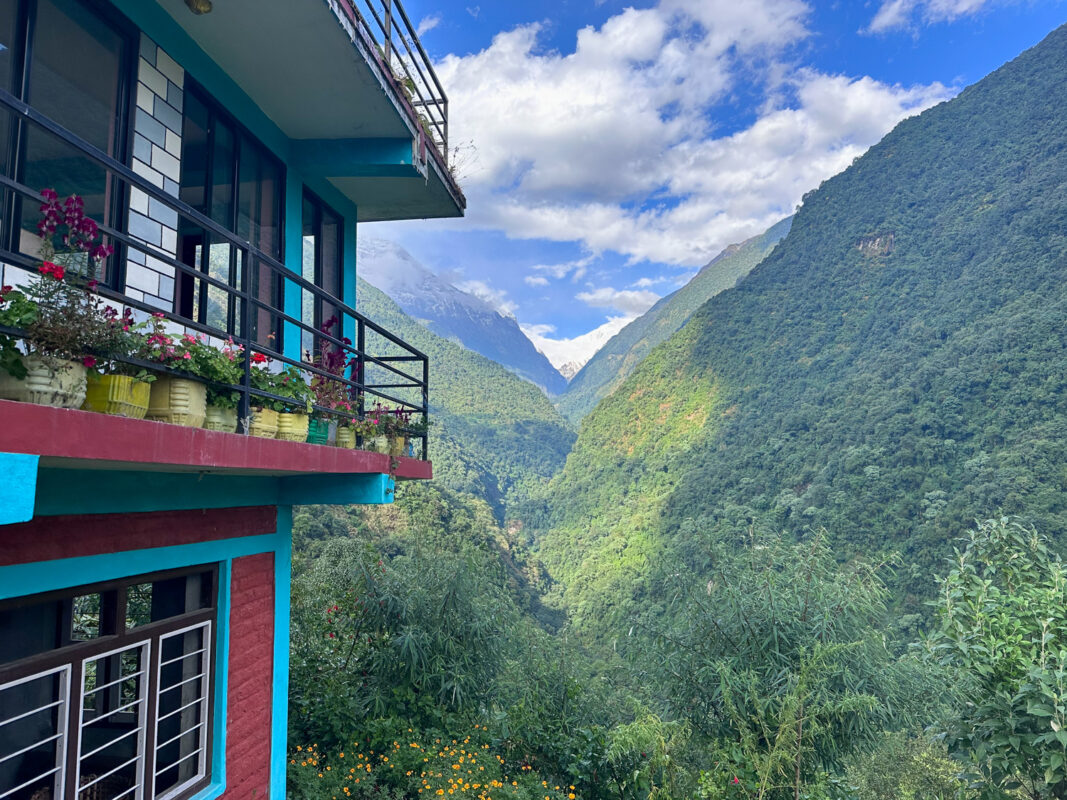
Transport
Public transport in Nepal is very cheap. However, it’s not always the safest or most efficient way to travel. Paying a bit more money for more reliable transport is a good option, especially when travelling solo in Nepal.
Depending on your itinerary, you can normally book transport to your next destination through your accommodation, especially when staying in hostels.
Your budget will massively vary depending on where you’re going and how you plan to get there. But as an example, a tourist bus from Kathmandu to Pokhara costs around $10 USD for the basic coach.
I’d suggest budgeting around $150 for bus transport. This will more than likely be more than what you need but will allow for a few taxis too.
Tours
If you’re planning your trip to Nepal, consider putting a bit of money aside for tours. I’m not talking about the big multi-day trekking tours, but instead day trips or guided tours around the towns and cities.
How much you budget will depend on what you want to do, but some of the most popular tours are below.
What to wear in Nepal (for female travellers)
Nepal is largely a Hindu country, with Buddhism and Islam also popular religions. As with many Asian countries, women are expected to dress conservatively, especially when visiting temples, monuments and shrines.
I didn’t find this as strict as in other countries, but it’s still advised to cover your shoulders and knees when exploring religious sites.
I wore loose-fitting trousers or a long skirt/dress to cope with the heat.
Essential packing items
Here are a few essential packing items for solo female travel in Nepal, as well as a general backpacking trip.
- Conservative clothes: Women are expected to cover their knees and shoulders when visiting religious sites in Nepal. This can be a long skirt, trousers or a scarf over your shoulders.
- Comfortable shoes: Even if you’re not planning to go hiking in Nepal, you’ll want to wear comfortable shoes. Many of the paths and roads in Nepal are unpaved, so it’s a good idea to have shoes that offer an element of protection.
- LifeStraw: I’d never needed a LifeStraw on my travels, but that changed in Nepal. The tap water in Nepal is dangerous to drink, and buying water bottles can be expensive and bad for the environment. Consider a LifeStraw or water purification tablets.
- Electrolytes: Travellers in Nepal often experience a bad stomach. Pack electrolytes to help you recover.
- Microfibre towel: Many guest houses and hostels don’t supply towels, or there is a fee to hire one. A lightweight quick-dry towel is a great solution.
- Warmer clothes: Depending on the time of year you visit, you’ll likely want some warmer clothes to wear at higher altitudes. While in Pokhara, it was very cool in the mornings and evenings, so I was grateful to have a warmer layer.
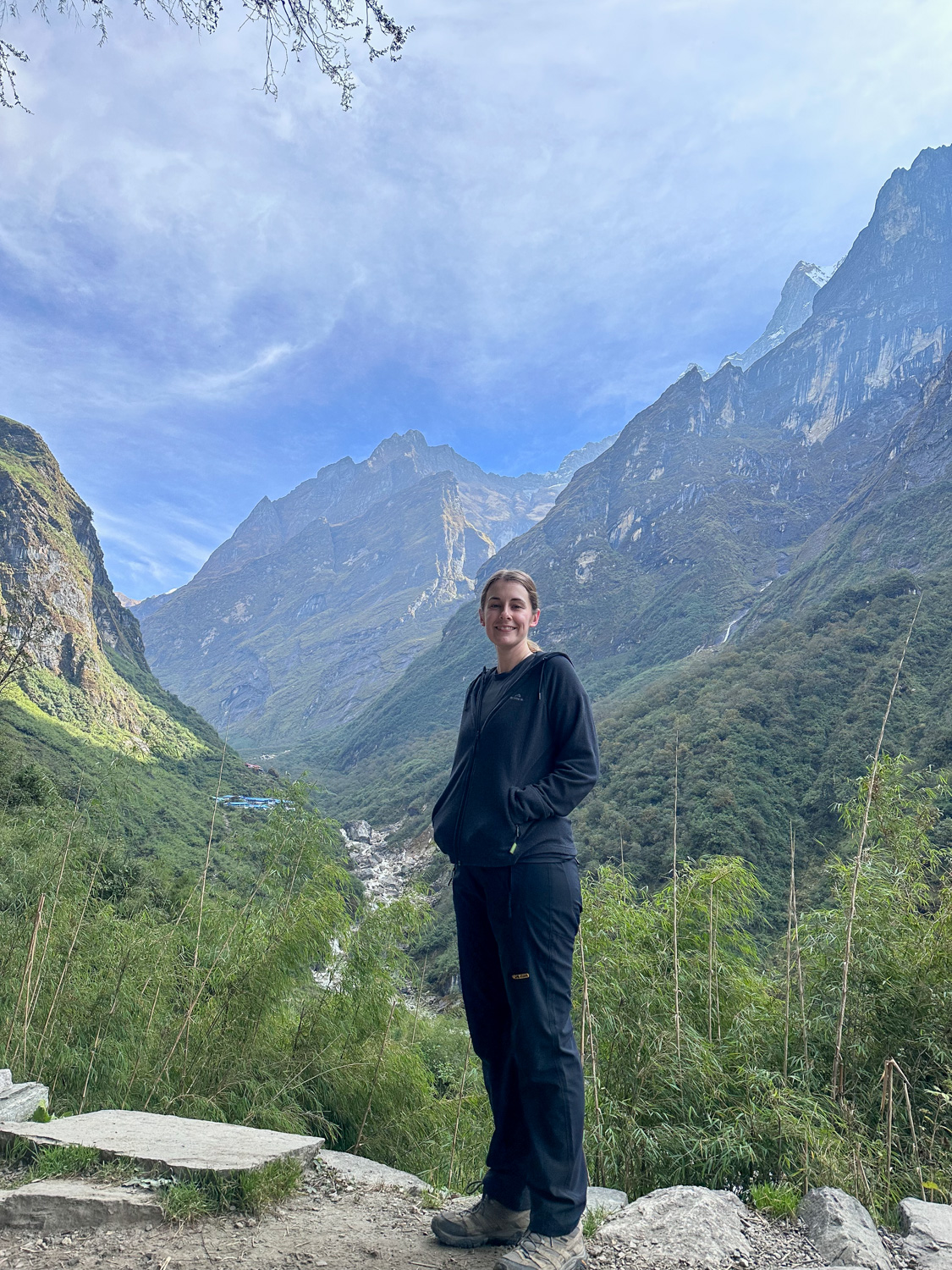
Other tips for solo female travel in Nepal
Stay connected with a SIM card
Staying connected is important when travelling in a foreign country, especially when travelling alone. I’d recommend purchasing a SIM card when arriving at Kathmandu International Airport.
Once you clear customs, there are several stands where you can purchase a SIM card. This took me less than five minutes and was well worth it. Some of the other travellers I met struggled to sort their SIM cards once they arrived in Kathmandu.
An eSIM is another option. Personally, I think the physical SIM cards in Nepal are much better value. However, if you want to avoid messing around with your SIM, an eSIM is a good option. I always use Airalo when purchasing eSIMs.
Be prepared for a range of accommodation
Accommodation can vary greatly in Nepal. There are several hostels in Kathmandu and Pokhara, but once you leave the cities, the main options tend to be guest houses and tea houses.
Hostels are a great way for solo travellers to meet new people. They tend to be social and often organise group activities. Many of the hostels in Nepal also provide private rooms for those who would prefer to have more privacy.
If I’m honest, staying in tea houses isn’t much different from staying in a hostel. These locally run accommodations normally have a shared space for eating and social activities. Many also offer dorm-style rooms.
While in Nepal, try and stay in at least one tea house. I experienced several during the Annapurna Sanctuary Trek and it’s certainly one of my highlights.
Note: If you happen to take on one of the less-trodden treks, you might even find yourself camping.
Tipping in Nepal
Tipping is customary in Nepal, especially for tour guides and porters on treks. While choosing a tour operator that pays its porters fairly is important, tipping is still expected and very important.
Tipping in restaurants isn’t expected, but it is very much appreciated. Some of the more Western-focused restaurants will add a small tip to the bill, but if not, a small cash tip goes a long way.
How to pay for things in Nepal
Using cash is the best way to pay for things in Nepal. Some of the more popular tourist restaurants and hotels accept credit cards, but cash is often the only way to pay.
Several banks in Kathmandu have ATM machines. There are also plenty of places to exchange money in the Thamel area. Just make sure to count your money once it’s been exchanged to ensure you’ve not been ripped off.
Withdrawing or exchanging money outside of cities such as Kathmandu and Pokhara can be difficult. It’s a good idea to withdraw any money you need in the bigger cities, as cash is the only way to pay in many rural areas.
Nepal uses the Nepalese Rupee.
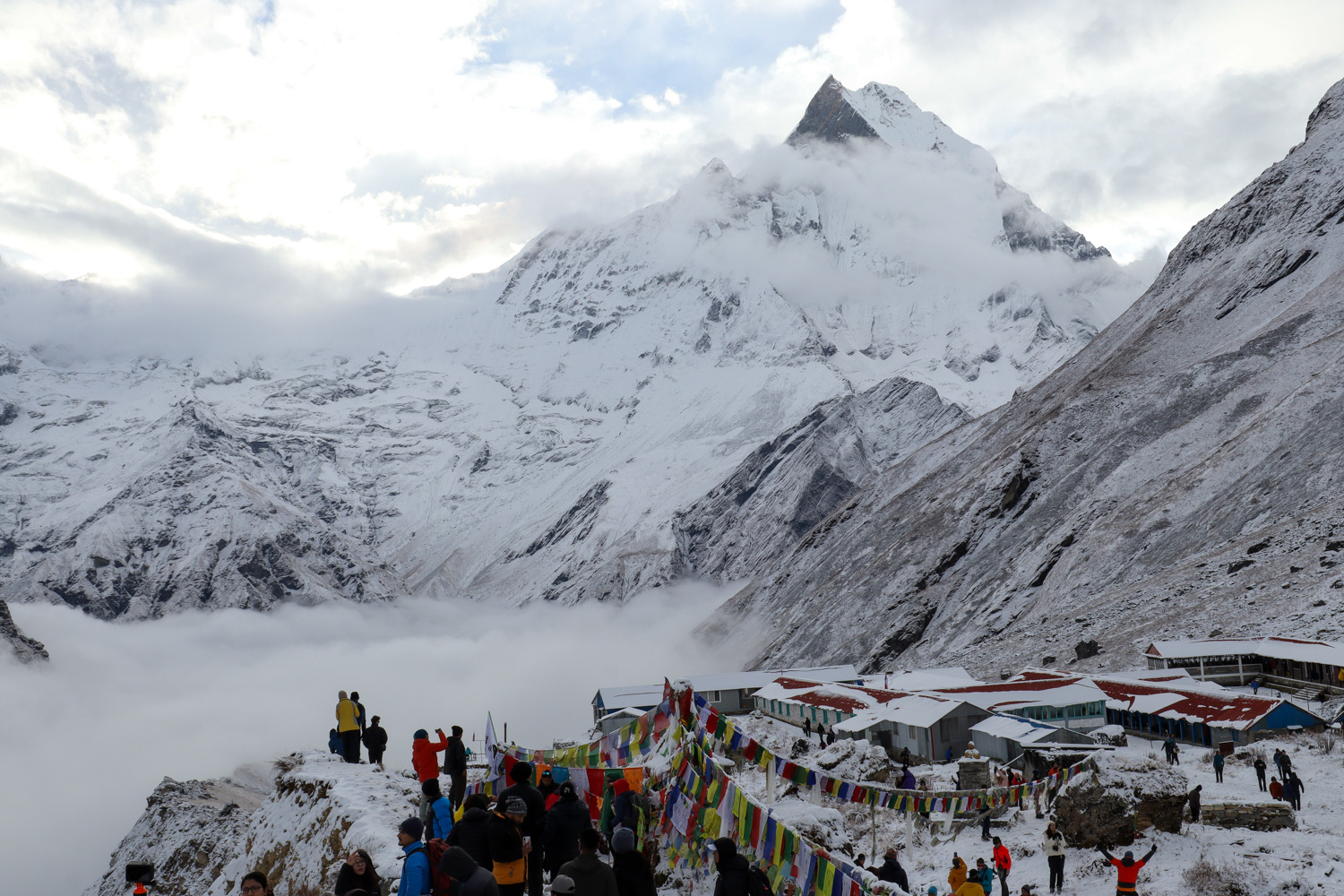
Book an airport transfer
Landing in any new country can be a little overwhelming, but I found Nepal to be particularly intense. Once I had cleared customs, countless people approached me asking if I needed a taxi. I was very relieved to have a taxi driver greet me and escort me through the chaos to a pre-booked taxi.
I booked the transfer through my accommodation. It cost me $10 USD, but the extra feeling of security was well worth it.
Research some of the local customs in Nepal
Nepal’s local culture and customs might be very different from what you’re used to. Arriving in a new country can be overwhelming for a solo traveller, but this is particularly true in Nepal.
Researching some of the local customs in Nepal can help relieve some of this solo travel anxiety.
One of the most popular customs is the greeting of “Namaste” with your hands pressed together and a slightly bowed head. You’ll find many of the locals greet you this way, and it’s polite to return the greeting.
What to eat in Nepal
The food in Nepal is some of the best I’ve had on my backpacking trip around the world. The food on offer is a mix of Nepalese, Indian and Tibetan food.
I’m working on a whole guide about the best street foods to try in Nepal, but in the meantime, here’s a quick overview on some of the must-try dishes.
- Dal Bhat: A mix of lentil soup, rice and accompaniments, Dal Bhat is considered the national dish. This staple meal is a must-try while in Nepal. If you’re going trekking, you’ll no doubt find it on almost every menu.
- Momos: These are similar to dumplings and are normally stuffed with meat or vegetables. They can be steamed, fried, or both, and they are served all over the country. They’re a cheap and satisfying snack or meal.
- Thukpa: This hearty noodle soup is another favourite food in Nepal. It’s the perfect dish after a day of hiking.
- Kwati: Another soup perfect for those cold days in the mountains. This soup is filled with beans, lentils and vegetables.
Note: Other than when I joined a guided food tour, I opted not to eat meat in Nepal. The food hygiene standards are not great in Nepal, so I felt better not eating meat. Our guide told us we shouldn’t eat any meat while on the Annapurna Sanctuary Trek, and I know this is also true for other popular hikes. Many of the small villages do not have the facilities to store meat so it is often left out in the heat.
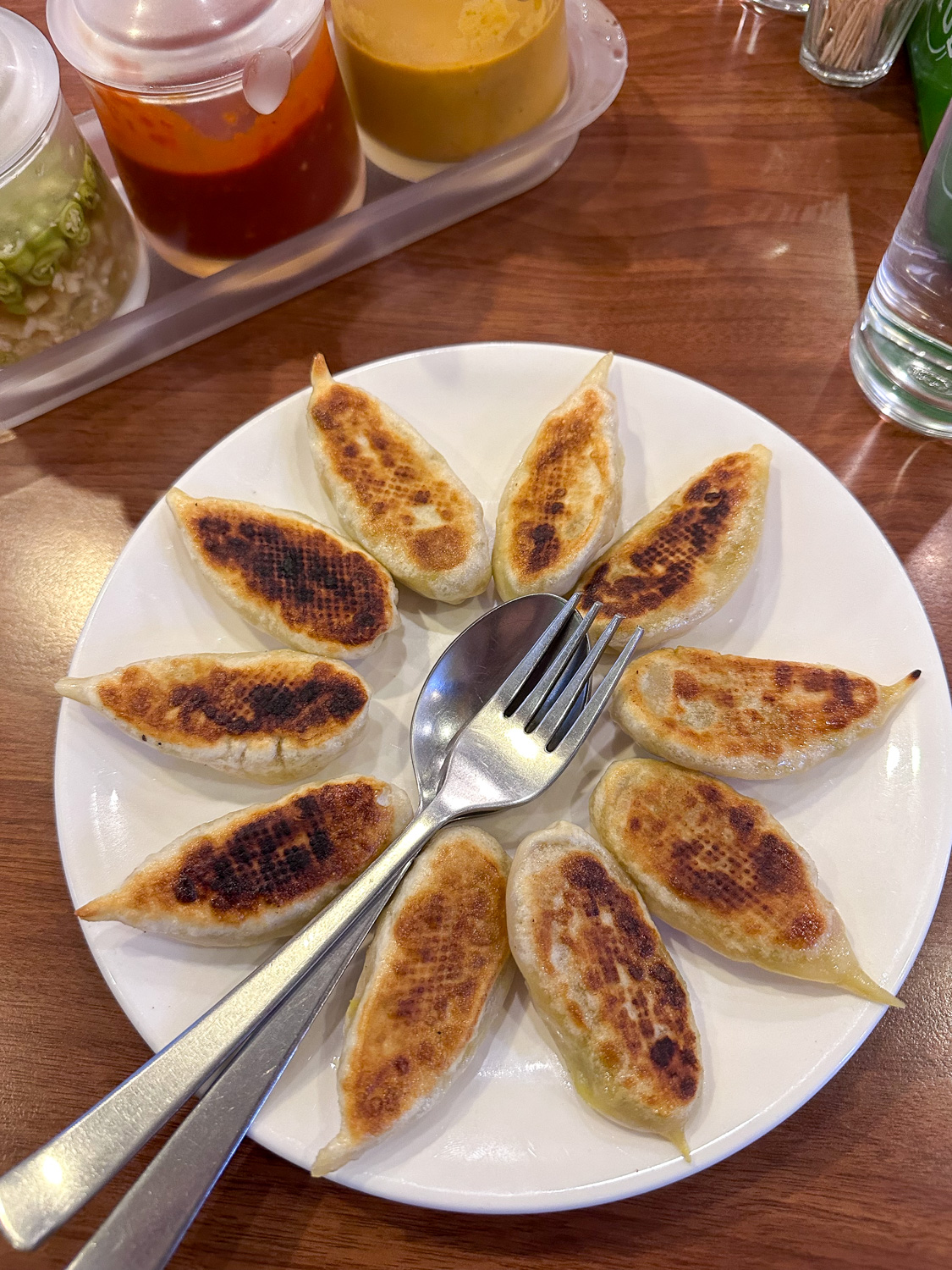
Group tours in Nepal
It’s normal to be nervous before a solo trip. I’ve travelled to over 30 countries by myself and I still get those pre-trip jitters. If you’re especially nervous about travelling solo around Nepal, joining a group tour might be a better option.
For those hiking, you’ll need to join a group tour to complete the hike (it’s now the law that all foreign hikers must have a guide). You can book this in advance or visit a trekking agency once you’ve arrived in Nepal.
If you’re not planning to hike but still want to travel Nepal with a group, consider a small group tour with a company such as G Adventures or Intrepid. These tours are the best way to experience a country when you’re nervous about travelling alone but still want to visit somewhere.
For those who have never joined a group tour, I’ve written a guide about group tours that tells you everything you need to know. Ultimately, these tours take you around the country with a set itinerary. You’ll be with the same group of people and have your transport, accommodation, and even some activities sorted.
The tours in Nepal take you to various spots in the country, including rural areas. I personally love G Adventures. I’ve travelled with them more times than I can count and only have good things to say.
Travel insurance in Nepal
I’m a big advocate for always having travel insurance, but this is especially true for Nepal. Depending on your policy, travel insurance will sometimes cover any accidents, incidents, medical emergencies or lost baggage.
When visiting Nepal, choosing the right travel insurance is extra important. The country is prone to natural disasters, so ensure you have an insurance policy covering natural disasters such as earthquakes, flooding, and landslides. I was surprised to discover how many policies don’t cover this.
If you plan to go trekking, you will likely need specialist insurance. This is true for the popular hikes including Annapurna and Everest Base Camp. Why? Because of the altitude.
High-altitude trekking is considered to be more dangerous than regular hiking. Most policies will cover you up to a certain altitude, but this is often well below what you will need for Nepal.
Along with having an insurance policy covering you for high-altitude trekking, you must also ensure it covers Nepal. Trekking in Nepal is considered a greater risk than in other countries. This is due to a mix of factors including how difficult it is to evacuate anyone from the mountains.
When choosing your insurance, make sure it covers you up to the altitude you want to hike, and also covers you in Nepal.
One of the best travel insurances for Nepal is True Traveller. This backpacking insurance has a range of policies covering various altitudes and also offers an add-on for Nepal. It’s not the cheapest insurance, but it’s renowned as one of the best insurances for backpackers (you must be a UK or European resident).
Please know that my recommendation for True Traveller is in no way sponsored, and I receive no benefits for recommending them. I genuinely believe they are a good company.
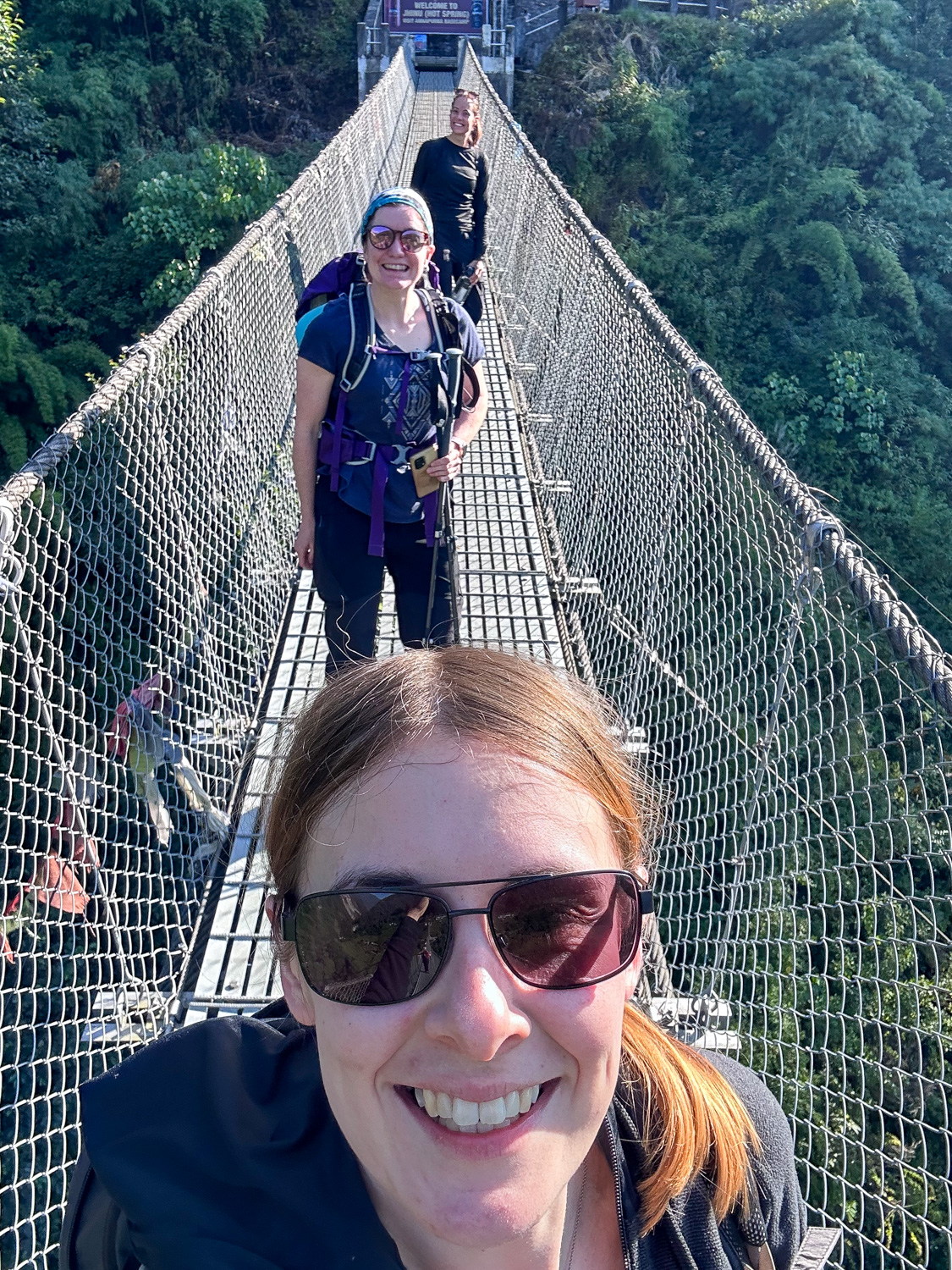
Final thoughts: Is Nepal a good destination for solo travellers?
Nepal is a great destination for solo travellers, and solo female travel in Nepal is becoming increasingly popular. Overall, Nepal is normally a safe country for solo travellers. I drew no unwanted attention for being a solo female traveller. The biggest risks in Nepal are petty crimes, natural disasters, and traffic accidents.
Granted, I don’t think Nepal is the best destination for a first-time solo trip. The country has poor infrastructure, and it can be very difficult to navigate. Arriving in the country can also cause quite a culture shock and feel a little overwhelming.
Despite this, Nepal is still a wonderful country with so much to offer. The Nepali people are some of the friendliest and kindest people I’ve ever met. I’m already planning my next solo trip to Nepal to take on another hike, and I can’t wait.
Did you enjoy this post on solo travel in Nepal? Share on social media or save for later.



